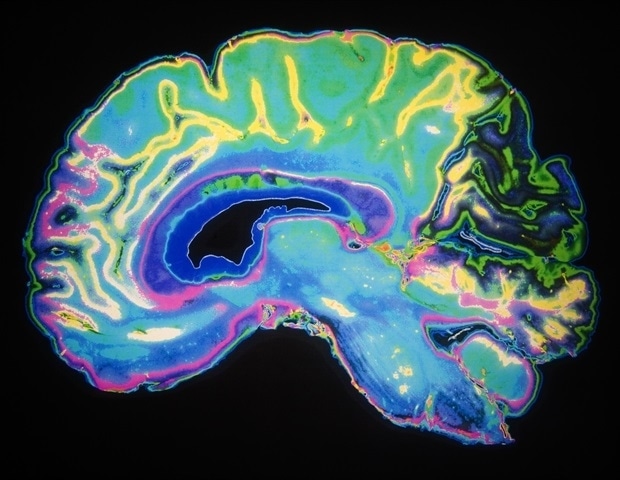Imagine you're sitting on a train. You look out the window and see another train on an adjacent track that appears to be moving. But, has your train stopped while the other train is moving, or are you moving while the other train is stopped?
The same sensory experience-;viewing a train-;can yield two very different perceptions, leading you to feel either a sensation of yourself in motion or a sensation of being stationary while an object moves around you.
Human brains are constantly faced with such ambiguous sensory inputs. In order to resolve the ambiguity and correctly perceive the world, our brains employ a process known as causal inference.
Causal inference is a key to learning, reasoning, and decision making, but researchers currently know little about the neurons involved in the process.
In a new paper published in the journal eLife, researchers at the University of Rochester, including Greg DeAngelis, the George Eastman Professor of Brain and Cognitive Sciences, and his colleagues at Sungkyunkwan University and New York University, describe a novel neural mechanism involved in causal inference that helps the brain detect object motion during self-motion.
The research offers new insights into how the brain interprets sensory information and may have applications in designing artificial intelligence devices and developing treatments and therapies to treat brain disorders.
While much has been learned previously about how the brain processes visual motion, most laboratory studies of neurons have ignored the complexities introduced by self-motion. Under natural conditions, identifying how objects move in the world is much more challenging for the brain."
Greg DeAngelis, the George Eastman Professor of Brain and Cognitive Sciences
Now imagine a still, crouching lion waiting to spot prey; it is easy for the lion to spot a moving gazelle. Just like the still lion, when an observer is stationary, it is easy for her to detect when objects move in the world, because motion in the world directly maps to motion on the retina. However, when the observer is also moving, her eyes are taking in motion everywhere on her retina as she moves relative to objects in the scene. This causes a complex pattern of motion that makes it more difficult for the brain to detect when an object is moving in the world and when it is stationary; in this case, the brain has to distinguish between image motion that results from the observer herself versus image motion of other objects around the self.
The researchers discovered a type of neuron in the brain that has a particular combination of response properties, which makes the neuron well-suited to contribute to the task of distinguishing between self-motion and the motion of other objects.
"Although the brain probably uses multiple tricks to solve this problem, this new mechanism has the advantage that it can be performed in parallel at each local region of the visual field, and thus may be faster to implement than more global processes," DeAngelis says. "This mechanism might also be applicable to autonomous vehicles, which also need to rapidly detect moving objects."
The research may additionally have important applications in developing treatments and therapies for neural disorders such as autism and schizophrenia, conditions in which casual inference is thought to be impaired.
"While the project is basic science focused on understanding the fundamental mechanisms of causal inference, this knowledge should eventually be applicable to the treatment of these disorders," DeAngelis says.
University of Rochester
Kim, H.R., et al. (2022) A neural mechanism for detecting object motion during self-motion. eLife. doi.org/10.7554/eLife.74971.
Posted in: Life Sciences News
Tags: Artificial Intelligence, Autism, Brain, Laboratory, Neuron, Neurons, Research, Schizophrenia
Source: Read Full Article
